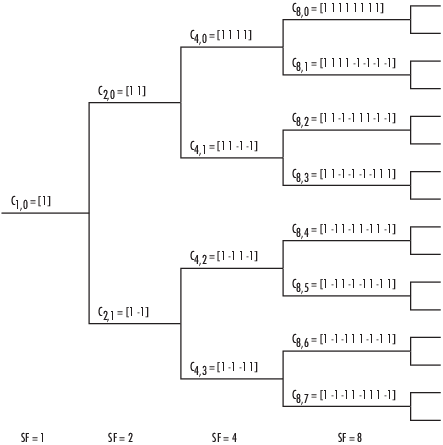comm.OVSFCode
Generate OVSF code
Description
The comm.OVSFCode
System object™ generates a code from an orthogonal variable spreading factor (OVSF) matrix. Use
OVSF codes to preserve orthogonality between different channels in a spread spectrum
communications system. For more information, see Algorithms.
To generate an OVSF code:
Create the
comm.OVSFCodeobject and set its properties.Call the object with arguments, as if it were a function.
To learn more about how System objects work, see What Are System Objects?
Creation
Description
ovsf = comm.OVSFCode creates a System object that generates orthogonal variable spreading factor (OVSF) codes.
ovsf = comm.OVSFCode(Name=Value) creates an OVSF code generator
object with each specified property set to the specified value. For example,
comm.OVSFCode(SpreadingFactor="128",SamplesPerFrame="10") outputs the
first ten chips of a spreading factor length 128 OVSF code generator.
Properties
Usage
Syntax
Output Arguments
Object Functions
To use an object function, specify the
System object as the first input argument. For
example, to release system resources of a System object named obj, use
this syntax:
release(obj)
Examples
Algorithms
References
[1] Kasapović, S. and N. Sarajlić. "OVSF code assignment in UMTS networks." 2010 20th International Crimean Conference "Microwave & Telecommunication Technology", 429–32. Sevastopol: IEEE®, 2010. https://doi.org/10.1109/CRMICO.2010.5632706.
Extended Capabilities
Version History
Introduced in R2012a
